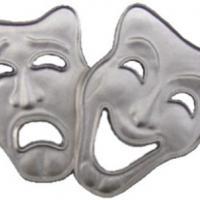
Bizarreness Contest from New Yorker Hotel
Last week I played in the Manhattan Open and as the tournament progressed I knew exactly what this week’s column would be about. The tournament endgames were of a very bizarre nature. Maybe the tournament location in a chandelier hall of the historic New Yorker Hotel inspired players to create something of an unbelievable nature. Or maybe the ghosts of the past were whispering moves to players that turned winning positions into losing ones, and losing positions into drawn ones. I don’t know what caused such an unreasonably high number of endgame disasters but a few of my endgames made the top list. Here, I present six endgames that are ranked from the sixth place having the least blunders to the first place having the most blunders and bizarre decisions.
6th place: Shahade- Zenyuk. The tournament started for me with a confusing loss in the first round to Greg Shahade, for whom this was the first game after a long (about 7 years) chess retirement. In the middlegame I sacrificed a knight and in mutual time trouble Greg had to bail out by going into a worse endgame.
After this game I did not know what to think about my endgame technique anymore. Was the series of positional misevaluations in the above endgame just an accident or a problem with my overall endgame technique? Finding the d5 resource is very hard but bringing out the king is a decision that any decent endgame player should make without much thinking. Going for this endgame in time-trouble was the right decision from white’s point of view because it was very easy to play it for white. We shall return to Shahade’s resourcefulness in a little bit.
5th place: Gisclan – Kovalchuk. Black is down a pawn but because the white pieces are so miserably placed I would say that black is better. His plan is to bring the king to d4 or e3 and harass the white king with threats of checkmate and pawn promotion. White’s only chance at counterplay is to make either g- or h- pawns mobile. The motifs of R+B vs. R from the past articles reappear here. There was no single blunder by black that lost the game but there was a series of blunders that gradually deteriorated black’s position.
4th place: Dominguez-Zenyuk. I won a piece on move 34 but it took me just another 50 moves to turn the position into a drawn one. The position in the diagram is winning for black as long as black stops the f-pawn in time. After the game I was criticized by a crowd of chessplayers who were watching for bringing the king to the queenside. This criticism is rightful as the king on g5 would both hide from rook checks and stop the f-pawn if needed. The king on the c-file is particularly misplaced as it allows white the tricks with Ra3, which threatens to take the knight with check. As this endgame showed I still have problems in thinking in terms of planning and piece placement in endgames. If you remember last week’s column that covered the Cleveland tournament, there I put the king on the wrong flank too. The blunder on move 75 should have left me without hopes for a win but the tables were reversed one more time with Dominguez’s 87th move.
3rd place: Shabalov – Shahade. When asked after the game how did he draw this endgame, Shabalov answered that Shahade had only one trick in the position and he fell for it. White is obviously better but it will take some time to realize the advantage as the extra pawn is on the kingside where it cannot be deployed yet because it is needed there to protect the white king. White did everything correctly but at the very last moment faltered. Shahade yet again showed his resourcefulness and should be given credit for setting-up enough problems and traps to cause the opponent to make mistakes.
2nd place: Zenyuk – Sarkar. I don’t think this will ever happen to me again but the ending was a complete miracle. Pawn-up endgames are almost always won without trouble. Rook or light pieces endgames with extra material might cause some problems to realize but pawn endgames are pretty much straight forward. International Master Sarkar is a well-rounded player and I am sure he knows more about endgames than I do. However, in this particular endgame he made a bizarre move that probably if asked he would have no idea how he decided on this move. He told me after the game that he knew about the g4 break but at that moment he either forgot about it or he was not sure what happened. I was sorry for him not winning this endgame and got puzzled looks from spectators confused as to how could that could possibly be a draw.
1st place: Kacheishvili – Zhao. This was the winner by far in the tragicomedy endgames contest. Me and a couple of friends watched the game live online and as it dawned on us that f4 was a fatal mistake it took us a while to realize that the game is lost, bluntly lost. It was very-very painful to watch this game end with white blundering the checkmating idea. Considering that b2 was winning right away instead of f4 it was even more sad to see a GM who usually wins endgames losing in this way.
Endgame blunders are specially painful because they occur at the end of the game. Imagine spending 5-6 hours grinding a better position and in the last minute losing all the advantage or even losing the game due to one poor decision. All the hard work and effort results in 0 in the cross-table. Only by practicing and studying endgames can one minimize the amount of accidents in endgames.

